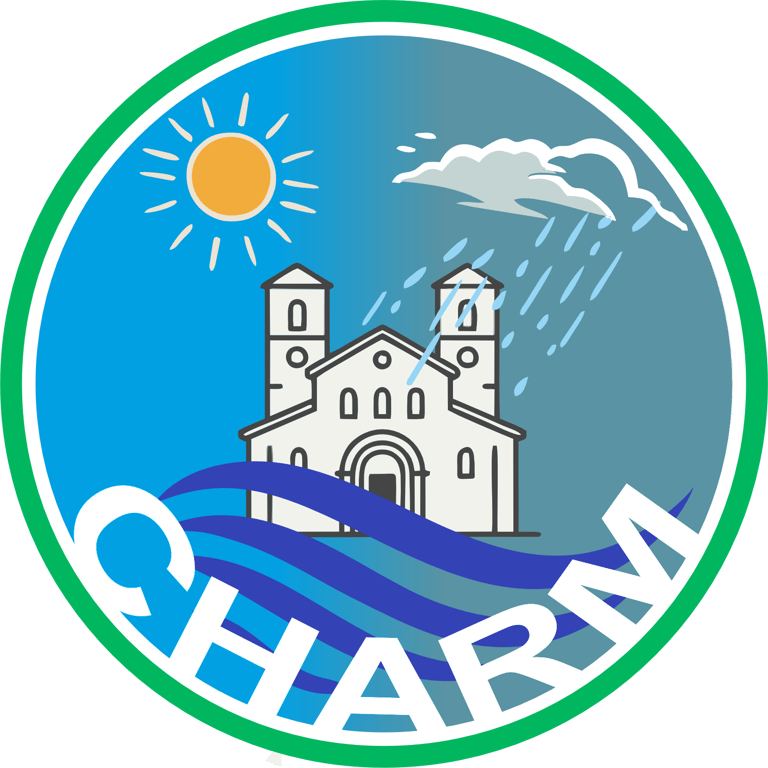Research
Architectural heritage reflects the history of cultures occupying the space for centuries or thousands of years. CHARM project focuses on sustainable conservation of architectural heritage, including buildings surroundings, from vernacular architecture to monuments and from archaeological sites to modern buildings.
Materials and methods for the conservation of Architectural Heritage have evolved in the last years and continue to do so, in order to propose solutions respecting the environment and the health of people restoring, occupying or working in the buildings. In the past, cultural heritage conservation professionals have employed materials and techniques based on their own experience and traditional knowledge transmission, founded on the behaviour of materials in past climate. Environmental and climate conditions have very fast evolved in the last few years and will continue to change, so previously employed procedures, in many cases, are no longer adequate.
Environmental sensitivity of society is fast developing and existing conservation procedures will not always fulfil new environmental legislation and population and decision makers' wills. For all these reasons, new conservation solutions must be proposed responding to the new climate conditions and also to socio-economical society requirements. Future researchers and professionals in conservation of architectural heritage must possess strong skills on their discipline but also a general knowledge on the field of sustainable cultural heritage conservation.
CHARM addresses the risk encountered by architectural heritage due to climate and environmental changes and the impact that architectural heritage conservation has on global change. CHARM contributes not only to cultural heritage conservation but also to the EU 2050 climate neutral objective.
Artificial Intelligence is extensively employed in many research fields but not in architectural heritage conservation. CHARM contributes to introducing the use of AI to improve sustainable conservation strategies for architectural heritage sites by an international, interdisciplinary and multi sectoral approach.
Training
Next generation of academics and non-academics working on architectural heritage conservation needs to combine different concepts such as circular economy, ecological footprint, life cycle assessment, with cultural, economic and social requirements.
They need to take advantage of recent technological developments and of the use of AI on architectural heritage conservation, meanwhile respecting cultural and social values. Nowadays, the use of more durable materials and methods having less environmental impact and considering the well-being of the population is preferred to some usual methods that do not respond to recent exigencies. Some sustainable methods are based on traditional construction techniques such as the use of traditional local materials, but others can be very innovative based on modern construction techniques, like the green façades. Preparing the young generation of researchers and professionals to this new approach of built cultural heritage conservation requires specific training that is partially developed in some universities but that have never been treated in an international doctoral network.

Contactez-nous
Pour toute question concernant le réseau doctoral européen, contactez-nous.
Réseau
contact@charm-project.eu
© 2025. All rights reserved.


